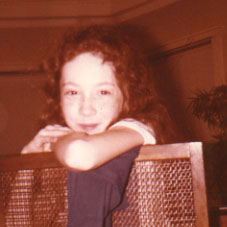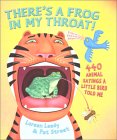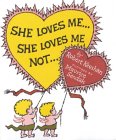



 Discussion Questions and Activities
Discussion Questions and Activities
Introduction
Discussion questions:
Activities:
* Make a list of twenty-five things you think you will always remember, even if and when you get grown-up amnesia.
* Children can put something in a brown box and present it to the class, explaining how the item would someday remind them of who they are in this point in time.
* Every forthcoming chapter in the book begins with "Let me tell you something about". As you begin each chapter, use Esme's first lines as journal prompts. For example:
Let me tell you about my mother or father
Let me tell you about my neighborhood
Let me tell you about school
Let me tell you about the weather
Let me tell you something about religion
Let me tell you something about love
Let me tell you something about grandparents
Additional prompts might be:
Let me tell you something about food
Let me tell you something about getting older
Let me tell you something about friends
Let me tell you something about afterschool
Let me tell you something about sports
Let me tell you something about holidays
Let me tell you something about the night time
Let me tell you something about mornings
Let me tell you something about relatives
Let me tell you something about wishes
Let me tell you something about technology
Let me tell you something about travel
Let me tell you something about disappointment
Let me tell you something about courage
Let me tell you something about fear
Let me tell you something about work
Let me tell you something about secrets
Let me tell you something about curiosity
Let me tell you something about money
Let me tell you something about respect
Some topics may overlap in the natural flow of narrative, but its nice to have a starting point!
Chapter One: The Egg Patrol
Discussion questions:

 Activities:
Activities:
* Esme writes, "My mom wasn't afraid of burning bridges," but she doesn't mean her mother actually burnt bridges. Children can illustrate their own idiomatic expressions, many found in There's a Frog in My Throat: 440 Animal Sayings a Little Bird Told Me by Loreen Leedy , My Teacher Likes to Say or My Momma Likes to Say
by Denise Brennan-Nelson and Jane Monroe Donovan or Punching the Clock : Funny Action Idioms or In a Pickle And Other Funny Idioms by Marvin Terbin.
Chapter Two: My Neighborhood
Discussion Questions:
Activities:
* Pass out five index cards and have the children fold them over, illustrating the place on the front of the card, and inside, writing a list of adjectives that describe the place. Using large butcher paper, children can make a map of their own neighborhood, gluing down the back of the index cards on appropriate spots on the map. Hang each one up and let the children give a tour.
* Esme describes the arms of the men playing basketball as "gathering underneath like stems reaching up for the same orange flower." Discuss simile, or comparisons using "like" or "as." What other similes could be used to describe a basketball game? Get children into small groups, and give each group an everyday scenario (a traffic jam, recess, lunch in the cafeteria, shopping at a supermarket, going to bed at night, visiting the doctor) and let each group come up with similes that might be fitting.
* Try to describe something or someone you see everyday without using adjectives like good, bad, pretty, ugly, nice or ugly.
Extended Reading:
Stars in the Darkness by Barbara Joose, illustrated by R. Gregory Christie
Something Beautiful by Sharon Dennis Wyeth, illustrated by Chris Soentpiet
A City Is by Norman Rosten
Chapter Three: Different Kinds of Schooling
 Discussion Questions:
Discussion Questions:

 Activities:
Activities:
* The lyricists from "Tin Pan Alley" were also great poets. Investigate lyrics by Oscar Hammerstein, Jerome Kern, Irving Berlin, Dorothy Fields, Cole Porter, George Gershwin, and Frank Loesser. Print out the lyrics and let the children read along while the music plays, and chart the rhyme schemes; you may also want to show video clips from musicals like Oklahoma!, Show Boat, Annie Get Your Gun and Kiss Me Kate to see the music in action. Show children an example of "sheet music." Let children use the internet to research more songs and biographical information about these lyricists, or to create a cover for a piece of sheet music. You can also have children try to create their own lyrics to familiar songs; check out Take Me Out of the Bathtub and Other Silly Dilly Songs by Alan Katz for examples. How about an open mike sing-along?
* Create a portrait of your best friend using words. Can you make a list of verbs that describe your friend? A list of adjectives? Which list gives a clearer picture of what that friend is really like?
* Make a wanted poster for a friend. What qualities should they possess?
* Spend a day at school run the way Esme's old school ran, with sign up sheets for activities that children would like to do, and the times in which they occur. Discuss at the end of the day. Was it fun to choose? Was it difficult to be responsible? Did time seem to move more quickly or more slowly?
Extended reading:
It's Back to School We Go! by Ellen Jackson
Ida B. by Katherine Hannigan
Getting to Know You! Rogers and Hammerstein Favorites illustrated by Rosemary Wells
The Secrets of Ms. Snickle's Class
by Laurie Miller Hornik
Watch Out for These Weirdos! by Rufus Kline, illustrated by Nancy Carlson
Chapter Four: It Snowed and It Snowed and It Snowed
 Discussion Questions:
Discussion Questions:
Activities:
* A ballad is a particular form of narrative poetry that can help us to remember people or events that have passed, so that they are preserved in history. After sharing some ballads with children ("The Ballad of Captain Kidd," "The Ballad of Birmingham" by Dudley Randall and "The Ballad of Spring Hill" by Peggy Seeger are a few popular examples) and exploring the format, let children research a current event and write a ballad to commemorate it so that nobody will forget.
* Read aloud more short stories that contain irony, such as O. Henry's "The Ransom of Red Chief", Richard Kennedy's "The Porcelain Man" or Susan Meddaugh's picture book, Tree of Birds.
* Have the children choose a color that represents a mood and paint a picture of one of the seasons using that color. Discuss why they chose the color, and how the seasons affect our moods.
Extended Reading:
Blizzard: The Storm That Changed America by Jim Murphy
Brave Irene by William Steig
To Every Thing There Is a Season: Verses from Ecclesiastes illustrated by Leo and Diane Dillon
Bridge to Terebithia by Katherine Paterson
Swear to Howdy by Wendelin Van Draanen
Chapter Five: Stealing the Afikomen
Discussion Questions:
 Activities:
Activities:
* Rabbis have had a long history of debating difficult questions. Read aloud some of the funniest fictional examples of problem-solving in stories from the legendary town of Chelm featured in Issac Bashevis Singer's short story collections When Shlemiel Went to Warsaw and Naftali the Storyteller and His Horse, Sus. Then hold your own debate to figure out what to do about a pressing situation in your own classroom.
* Esme thinks it will be a very long time to prove she is able to prove she is the kind of girl who wants "tools and bread" more than jewelry, but many have laid the groundwork for her. Make an illustrated timeline of powerful women in history! Let each child illustrate the achievements of a famous woman from a historic period you assign on a small piece of poster paper, and then hang them up in chronological order on a clothesline. Look how far it stretches!
* Eavesdrop on some dialogue. Try to write things down exactly as you heard them. What makes people speak differently? Discuss: Do some people use dialect? Do some people have stock phrases? Do some people have sentences that go on and on, while others use short answers? How can you write so that you can tell one character from another?
Extended reading:
Remember the Ladies: 100 Great American Women by Cheryl Harness
The Bad Times of Irma Baumlein by Carol Ryrie Brink
The Rabbi and the Twenty Nine Witches by Marilyn Hirsh
Chapter Six: Love Has No Experts
Discussion Questions:

 Activities:
Activities:
* Have children write an advice column for the literary lovelorn. What sort of suggestions might characters from books need to succeed in love?
* Build a radio transmitter using an inexpensive kit from Radio Shack or other electronics store. Discover how sound is really transmitted, even without the "power of love."
* Esmešs stories have a lot of dialogue. Have the children pick a section of the book and translate the dialogue into reader's theater. Have an afternoon of performances!
Extended reading:
She Loves Me, She Loves Me Not by Robert Keeshan, illustrated by Maurice Sendak
June B. Jones Loves Handsome Warren by Barbara Park
The Fortune Tellers by Lloyd Alexander, illustrated by Trina Schart Hyman
Wise Gal Tarot: Amazing Ways to Read Your Fortune by Jane Burns and Dale Gottlieb
Chapter Seven: Grandma's Fun House
Discussion Questions:

 Activities:
Activities:
* Interview a grandparent or elderly neighbor using a tape or video recorder. Have children write out in advance what questions are going to be asked and research the time period of their subject's growing up. After all of the interviews are presented, discuss: what has stayed the same over time? What is different?
* Visit an assisted living facility for an afternoon of board games with residents. Contact the activity director to make arrangements.
* Take children's pictures using black and white film for the sheer novelty of it! Then have them write letters to their future grandchildren and enclose the photo. Seal the envelope and voila, a tiny time capsule!
* Plan a gala for grandparents! What will the menu be? How will you decorate? What should the invitations say? Will there be entertainment? Let the children decide and create a memorable afternoon for seniors in your community.
Extended reading:
In My Grandmother's House: Award-Winning Authors Tell Stories About their Grandmothers edited by by Bonnie Christensen
How Does It Feel to Be Old by Norma Farber
The Pennywhistle Party Planner by Meredith Brokaw
 Interview with the Author
Interview with the Author
Why did you write this book?
When I went to revisit a fifth grade classroom in a school where I used to teach, all the children gathered around me and jumped up and down and told me to tell them a story, because that's what I used to do the most when I was their teacher. So I sat us all down and smiled a big smile and started telling a story about a rat and a cat, and a girl that I liked very much was disappointed. She said, "No, no, tell us a story about you. When you were our age."
All the children became very excited. "Yes! Tell us about the times when you were bad!" I think this was of special interest because I am such a well-behaved grown-up, it is hard to believe there has ever been a time when I might have been otherwise.
So I told the kids in that classroom the first thing that came to mind, about starting my own school newspaper when I was in seventh grade and getting yelled at by my teacher about it. It was a pretty good story, but I was dissatisfied because when that happened to me I was a little older than they were, and I wanted to tell them a story about when I was exactly their age. So I explained that they put me on the spot, that I hadnšt come in expecting to have to remember my old life. It was surprisingly difficult recollect a story off of the top of my head. I promised I would think about it and see if I could come up with anything else.This bookis what I came up with.
I decided to try to get these personal stories published because I would like children to see that even though its fun to write about things like robots and car chases and haunted houses, there are lots of stories in everyday things, in things that really happen. I want children to know that you don't have to make something up to be interesting, you just have to become observant and appreciate what's going on all around you.
So do you think journaling is an important way for children to learn to write?
I sure learned a lot from doing it as a child! I also liked writing short articles and plays and poems. I notice when I visit classrooms, sometimes every piece of writing is worked over to smithereens, using a process that involves showing everyone the writing and getting feedback, reworking, publishing…having a fixed process has some value, but frankly, I would have gone crazy if I had approached everything I wrote like that! Sometimes itšs just nice to write something for fun, or to enjoy the feeling of finishing a draft and put it away to revisit at another time. It's hard to develop a voice is you're always writing to please other people. Journaling is an opportunity to enjoy that freedom of writing without being corrected, and to have a place to put ideas.
Are these stories really 95% true?
One of the most important decisions a writer makes when creating a story is the point of view, because that changes the entire story. They are true from my perspective. I kept journals since I was about seven years old, and these were very helpful in remembering the way I felt when I was younger, as well as the way people spoke and things that happened. Still, I am sure all of these stories would be a little bit different if my mother, father, brother or friends wrote them, because everybody sees things a little bit differently. The genre of journal, or memoir, is a very particular kind of writing, one that portrays feelings that may be fleeting, one that may not always cast people in the best possible light. It contains a lot of what is thought and not always said out loud: feelings, opinions, attractions. I think it is important to talk about the writer's limitations in writing from a first person perspective, and the gravity of what decisions are made when trying to write about one's own life. There is no exercise like journaling to prove how hard it is to be impartial and fair and even correct all of the time, and how much we change from day to day.
I'm always so grateful when a teacher takes the time to discuss perspective with their kids. It's a wonderful way to become a better writer, but it helps in becoming a better reader, too.
Do people get angry when you write about them?
Sometimes they do! Like I said, everybody has a different perspective on a story, and so they might feel the story is inconsistent with what they remember , or something is made public that they feel is private.
Another thing that I think is difficult about writing real people into books is that in books, people never change. Every time you open the book, they are the same way, doing the same things, saying the same things, making the same choices. In real life, people and their circumstances can change, and over time, they usually do. I imagine it can be frustrating to see yourself in a book, because it doesn't reflect the changes you may have made, or the work that went into those changes. So I think it is an author's responsibility to portray memories with some compassion and, when possible, affection.
What is still true in the story? What is different?
I can only play piano by ear, and I still hate going to the Laundromat. I still do a pretty decent imitation of Ethel Merman. I still miss my grandmother. I don't lip-synch just because my brother tells me to, and I don't have to wonder who I'm going to marry when I grow up, because I've been with my husband for about 18 years. Despite the Gypsy prediction in the book, he is not in hotel management.
 Further Reading
Further Reading
Other memoirs by children's authors and illustrators:
The Abracadabra Kid by Paul Fleischman
Knots in My Yo-Yo String: The Autobiography of a Kid by Jerry Spinelli
26 Fairmount Avenue by Tomie DePaola
How Angel Peterson Got His Name by Gary Paulsen
Looking Back: A Book of Memories by Lois Lowry
Bill Peet: An Autobiography by Bill Peet
A Day of Pleasure by Issac Bashevis Singer
Chewing the Cud by Dick King-Smith
Down a Sunny Dirt Road by Stan and Jan Berenstain
Five Pages a Day by Peg Kehret
A Girl from Yamhill by Beverly Cleary
Homesick: My Own Story by Jean Fritz
Childtimes by Eloise Greenfield
Please support your local independent bookseller! Visit Booksense for a store near you.